
 |
|
|
#1 |
|
Member
Join Date: Aug 2007
Posts: 865
|
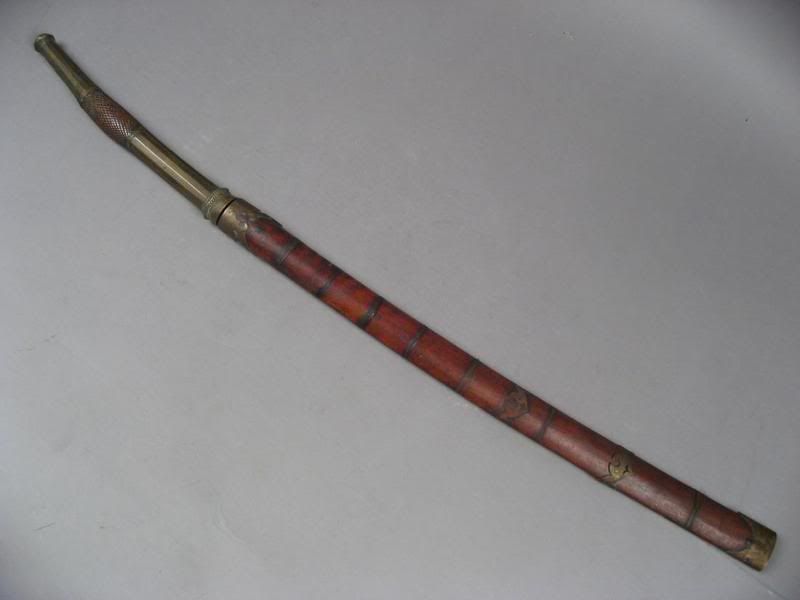 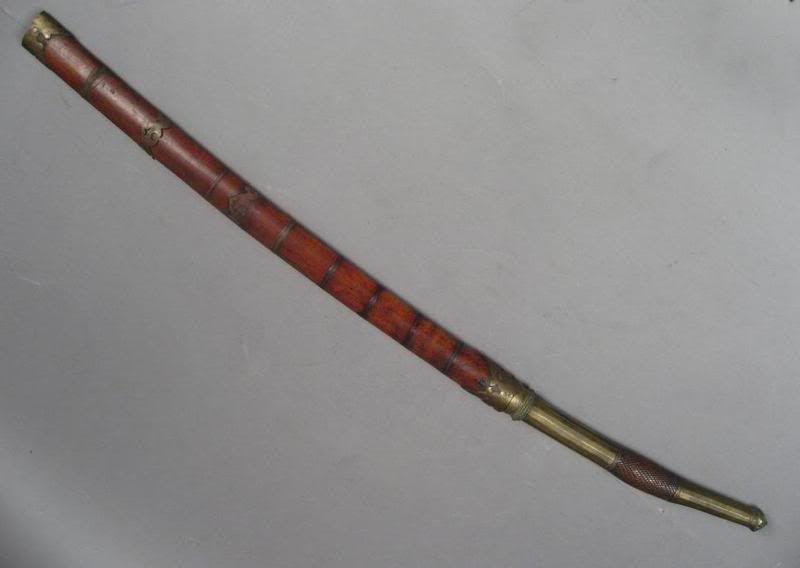 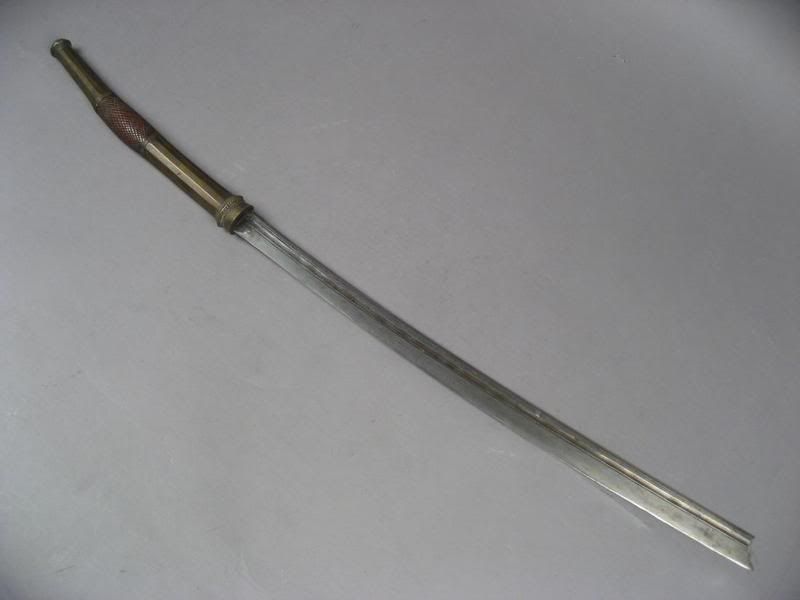 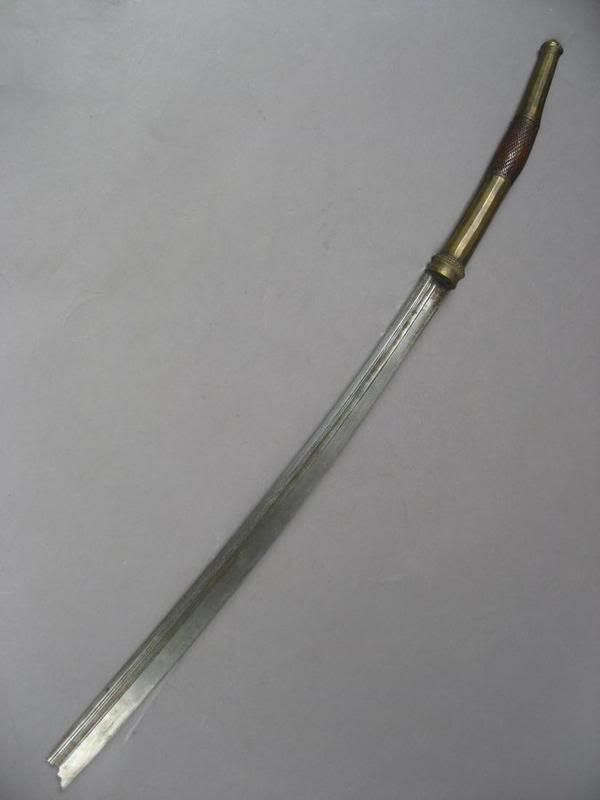 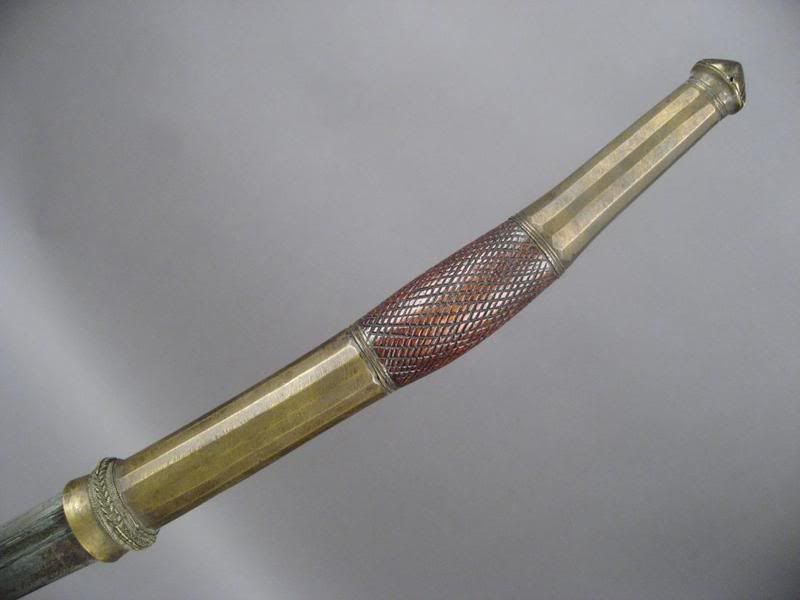 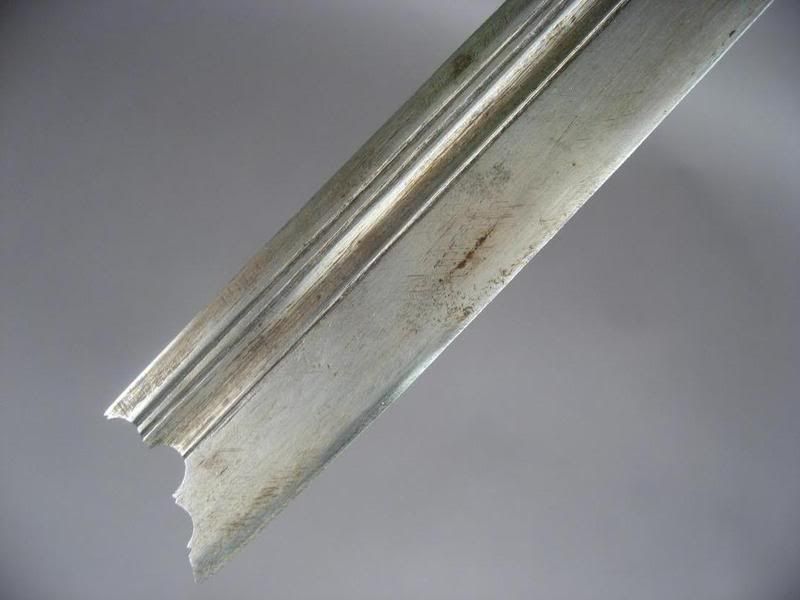 I find the tip in particular very interesting...it reminds me of the kris blade at the hilt. Do you think it was a a damaged blade that was repaired? I've never seen a tip like this. |
|
|

|
|
|
#2 |
|
(deceased)
Join Date: Dec 2004
Location: East Coast USA
Posts: 3,191
|
Nathaniel
I love this sword very different in my eyes. The tip reminds a little of the parang I just picked up. Lew |
|
|

|
|
|
#3 |
|
Member
Join Date: Nov 2006
Location: The Netherlands
Posts: 2,237
|
MURUT influences
  Very nice sword by the way. lovely old patinated fittings. |
|
|

|
|
|
#4 |
|
Member
Join Date: Dec 2004
Location: Kernersville, NC, USA
Posts: 793
|
That is an absolutely stunning sword.
Steve |
|
|

|
|
|
#5 |
|
Member
Join Date: Jun 2006
Posts: 179
|
Nice one. Love the curved handle. I have one with curved hilt as well. Always wondered if it was to assist in two-handed use or for trapping opponent's arms in battle.
|
|
|

|
|
|
#6 |
|
Member
Join Date: Aug 2007
Location: CHRISTCHURCH NEW ZEALAND
Posts: 2,813
|
Hi Nathaniel,
In my humble opinion, I do not think that this is a Yunnan Dha. Style suggests more Burmese/Shan States to me. MARK---What do you think? I have posted a couple of pics of definate Yunnan Dha which I have in my collection. Each has a guard and one has a Chinese makers mark. Now to the blade................how does the length compare with the scabbard length? If the blade is noticably shorter, then it would suggest that it has been broken and refinished. Nice piece though, even if it does turn out to be a new "finish" to the blade tip. |
|
|

|
|
|
#7 |
|
Member
Join Date: Aug 2007
Posts: 865
|
kahnjar1,
kahnjar1, Nice Yunnan pieces. Thanks for sharing  You might be right...the person who sent me the pictures called it a Yunnan dha..so that is just what I labeled it :P I would lean more towards Kachin versus Shan...but in Yunnan province the Kachin are called Jingpo...it's difficult to distinguish because there are several hill tribes that live on across borders and they traded with each other.. For example, I have some modern dha from the Shan state, but the blade style makes you think more Kachin...but actually the Chinese characters name a village in Yunnan.... It would be interesting to hear what others like Mark, Ian, Andrew, have to add...I'm new at this and have allot to learn. Oh, and I wish I could give you the stats on the blade, etc, but unfortunately this one is not owned by myself or the guy who sent me the photos. |
|
|

|
|
|
#8 |
|
Member
Join Date: Aug 2007
Location: CHRISTCHURCH NEW ZEALAND
Posts: 2,813
|
Hi Nathaniel,
I was also thinking Kachin, as the hilt style is found on their Dha also, but hopefully one of the "Learned Three" will chime in on this. Regards Stuart |
|
|

|
|
|
#9 |
|
Member
Join Date: Aug 2007
Posts: 865
|
Stuart,
Following your post, I thought I would just post up pictures of some other dha/daarb/dao with Chinese motifs from the HOS & dha research index..fantastic pieces.   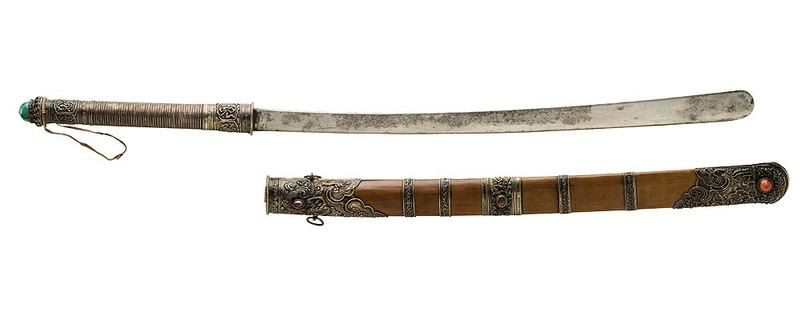 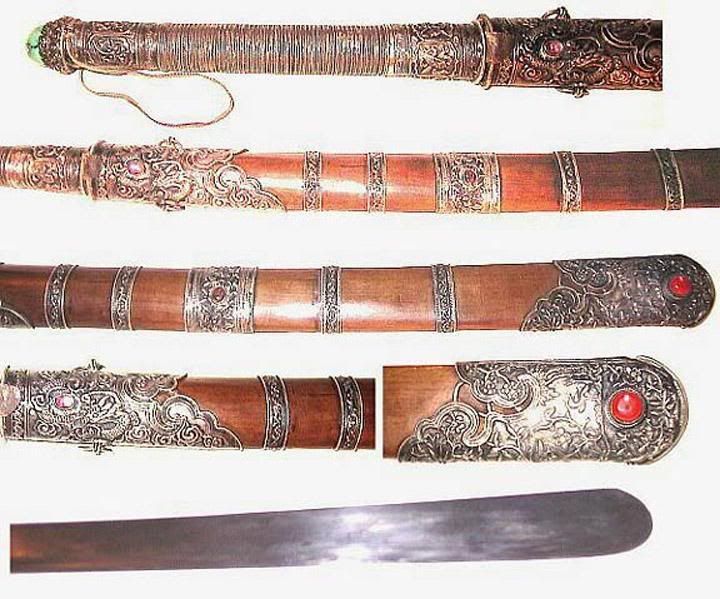 Does anyone else have pics along the same lines to share? |
|
|

|
|
|
#10 |
|
Member
Join Date: Jul 2006
Location: musorian territory
Posts: 477
|
there is a company in china still making these swords.... they have a web site.. they are making weapons from the dai ethnic group
|
|
|

|
|
|
#11 |
|
EAAF Staff
Join Date: Feb 2005
Location: Centerville, Kansas
Posts: 2,196
|
Using the pictures at the top of the post and comparing the blade length to scabbard length the blade seems to be about 92% the length of the scabbard.
 Robert |
|
|

|
|
|
#12 | |
|
Member
Join Date: Dec 2004
Posts: 1,247
|
Quote:
|
|
|
|

|
|
|
#13 |
|
Member
Join Date: Aug 2007
Posts: 865
|
I just looked up the Dai people...they are also know as the Thai Lu in Thailand...one sub group is the Thai Yong, "Tai Yong are thus descendants of the Tai Lue. In Thailand, these people are know as Thai Yai (Big Thai) and by the rest of the world as Shan."
http://en.wikipedia.org/wiki/Dai_people http://en.wikipedia.org/wiki/Shan_people http://en.wikipedia.org/wiki/Jingpo |
|
|

|
|
|
#14 |
|
Member
Join Date: Aug 2007
Posts: 865
|
ausjulius, yes, do you know their website?
|
|
|

|
|
|
#15 |
|
Member
Join Date: Oct 2007
Posts: 2,818
|
I will ask a gentleman in Hong kong who provided me with many images of this village or one of these small mountain villages in Yunnan on the Burma/China border and also images of their work.
His visits were in the 1980's and they have been making blades for many hundreds of years. My interest started some time ago when I purchased Bhutanese dagger of nice quality that had Chinese characters on it. I'll see what I can post for all interested. Gav |
|
|

|
|
|
#16 |
|
Member
Join Date: Dec 2004
Posts: 987
|
I, too, think this is a "Bama" dha, though the fittings have a Chinese flavor to them. Still, it could very well have come geographically from Yunnan, as ethnic groups straddle the border, and swords seem to migrate even further. I do not think that the tip is re-worked. Though I have never seen one precisely like this, you do get some exotic ones:
   The long, curved handle is sort of unusual, too, for that style. Yet another sub-type, or possibly hybrid style. It never ends.  
|
|
|

|
|
|
#17 |
|
Member
Join Date: Mar 2007
Posts: 407
|
I think the Chinese call anything like a dha a "Dai dao". This is one I have posted before that I think is Burmese (Shan?) in style but was certainly found in Yunnan. The blade is a slim "willow leaf" style similar to familiar Chinese blades but slim and light in comparison. I have a Vietnamese daarb with almost the same blade. It seems to be a more or less standard form, at least in a smaller example like mine.
   Josh Last edited by Mark; 26th February 2009 at 04:36 PM. Reason: Changed coding to directly import images |
|
|

|
|
|
#18 | |
|
Member
Join Date: Aug 2007
Posts: 865
|
Quote:
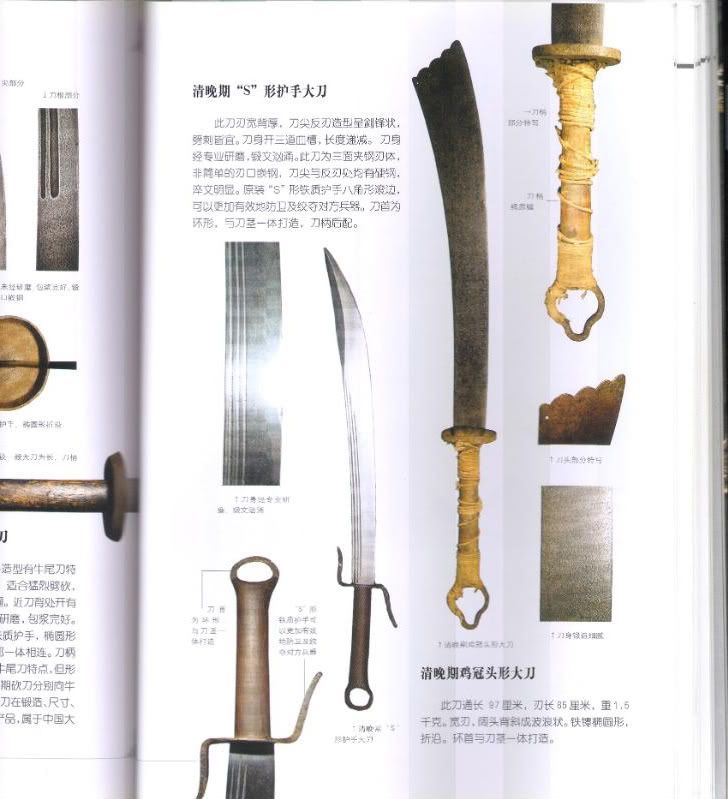 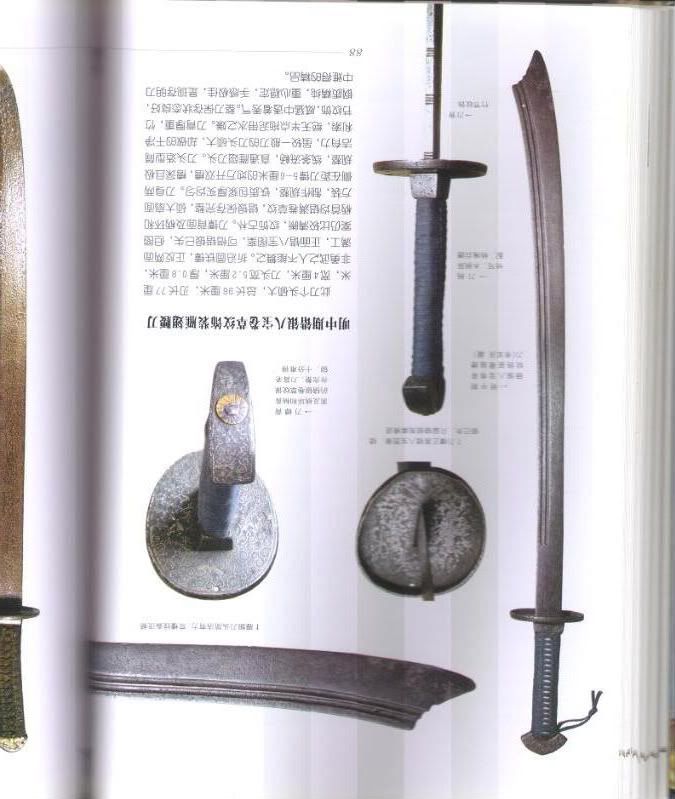 I've been told this type tip is called a roster head/comb...Philip Tom said this type of tip is generally labeled "phoenix wing" or fengchi shape |
|
|
|

|
|
|
#19 |
|
Member
Join Date: Nov 2008
Posts: 88
|
Keep in mind that the Burma/China border was not completely established until the mid 1900s. In fact, one of the reasons for the Kachin rebellion which began in 1962 was that U Nu agreed to a border that "gave" several Kachin villages to China. Also, Kachin is a recent collective term that covers Jinghpaw/Jinpo, Maru, Lashi, Atsi, Rawang and some times Lisu, all of whom live in both China and Burma for years and have for centuries before either country took their present shape. Jinghpaw/Jinpo/Singpo and Lisus also have substantial populations in India.
The Thai/Tai/Dai people are similarly live in several different countries from India (Assam and Siam share the same root) to Vietnam. In the early 19th century the King of Chiang Mai, at that time a vassal kingdom of Bangkok, made several raids in to China and forcible resettled numerous Tai Lue villagers in northern Thailand, which had been depopulated due to the wars with Burma. The Shan State was actually made part of Thailand during WWII by the Japanese occupation, I guess my point is borders aren't as rigid as they might appear, and there have always been all sorts of interaction between cultures for centuries. In Kutkai, everybody speaks four different languages as part of every day life. |
|
|

|
 |
|
|